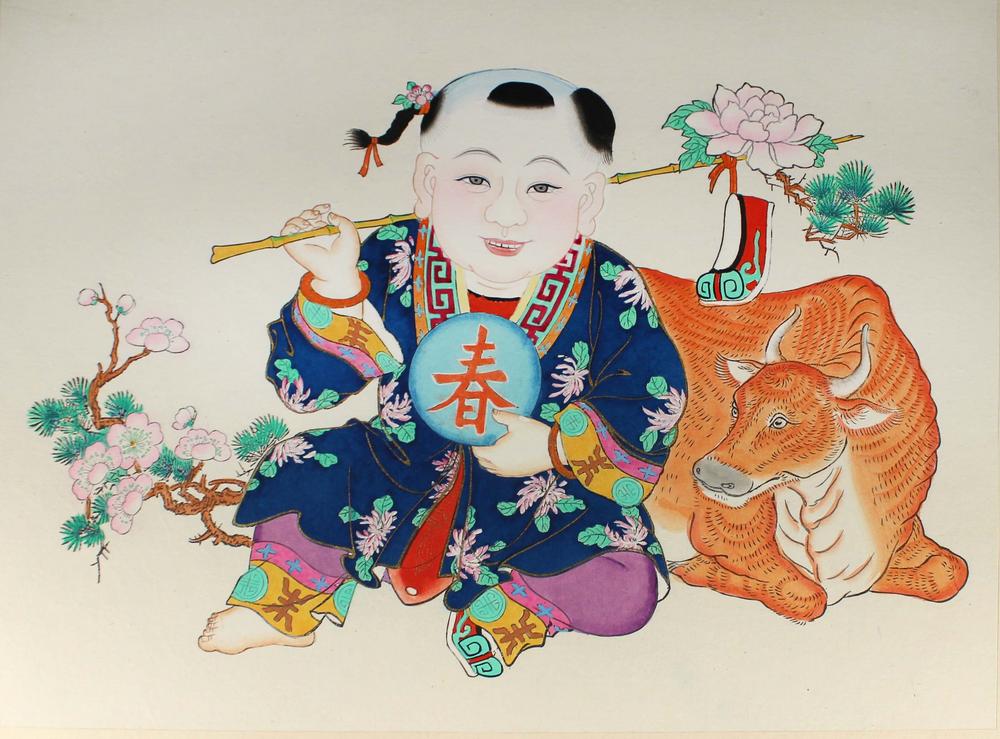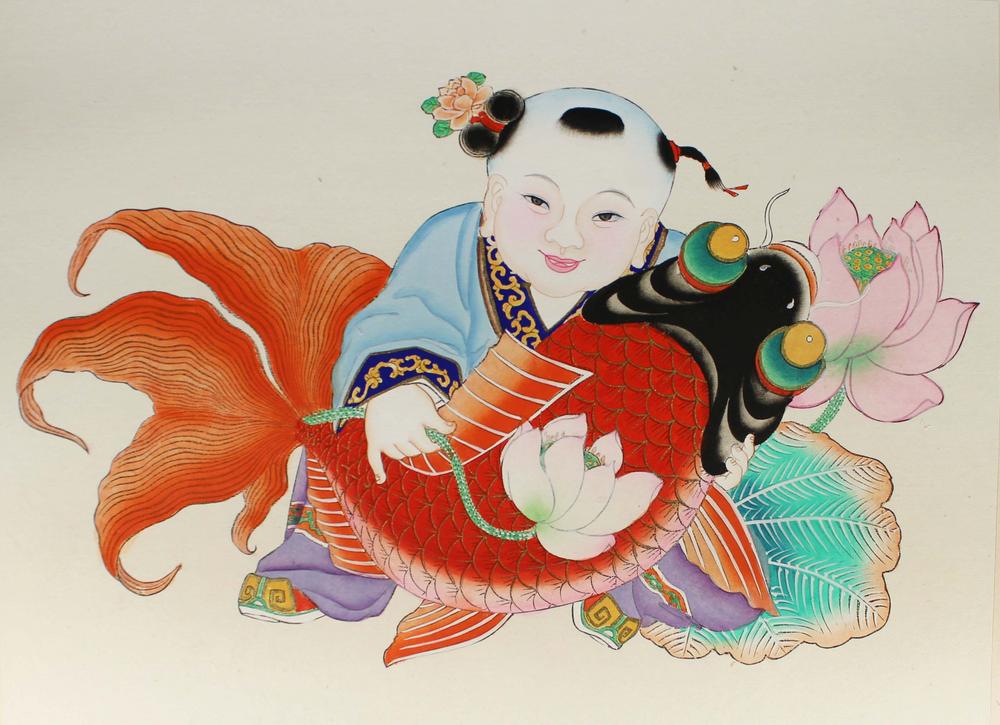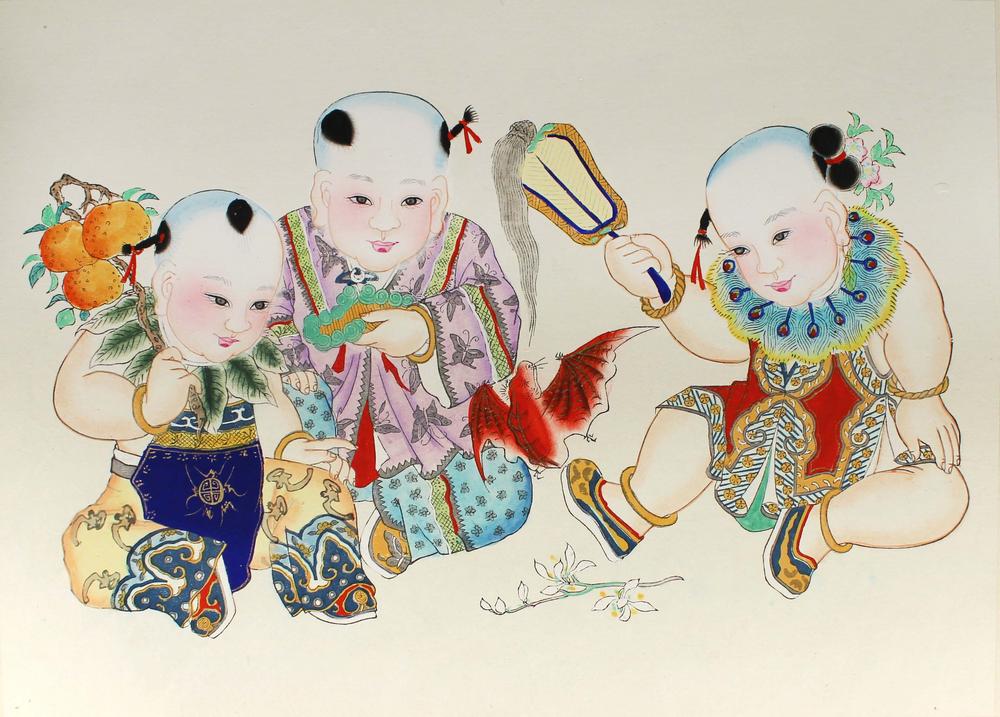The Asian Library at The Claremont Colleges Library holds two sets of original and rare 楊柳青年畫 (New Year Woodblock Prints of Yangliuqing). The two sets, each consisting of 12 new year paintings printed with woodblock and manually colored, were produced by 天津榮寶齋 (Rongbao Studio in Tianjin) in the early 1960s. A search in WorldCat (union catalog for libraries in the United States and other countries) indicates that the two sets held in the Asian Library are not available at any other libraries in the United States.
The new year woodblock prints from Yangliuqing are well-known Chinese folk paintings. They originated from Yangliuqing, a town in Tianjin City of China during the reign of Emperor Chongzhen (崇禎) in the late Ming dynasty (1368-1644 AD) . Linked to Chinese folk customs and daily life, the prints are popular ornaments used to adorn doors and rooms during the Spring Festival (春節) in China, expressing good wishes for the new year. They cover a wide range of themes, all aiming to convey messages of good luck, a festive atmosphere, and praise of traditional Chinese virtues and worship of gods, especially those of fortune, prosperity, and longevity.

(Happy Spring)
The painting portrays the coming of the Spring and the best wishes for abundant harvests throughout the year, with good weather and strong cattle. The character the boy holds is 春 (pronounced “chun”, meaning Spring).
Babies are a popular theme in the paintings because for centuries Chinese people believed that more children would bring more blessings and greater happiness. A recurring image is the cherubic baby holding a lotus flower while clutching a big fish. In Chinese, the word “lotus” sounds similar to “consecutive, repeatedly, or one after another”, and fish is a homophone of “surplus” so together they imply a wish for “prosperity year after year (連年有餘).”

(Having surplus year after year)
Other homophones and symbolic objects include Bat 蝠, pronounced as “fu”, homophone of 福 fu, meaning Fortune; Fan 扇, pronounced as “shan”, homophone of 善 shan, meaning Kindness; Orange 桔, pronounced as “ju”, homophone of 吉ji, meaning Luck; Chime磬, pronounced as “qing”, homophone of 慶qing, meaning Celebration.

(Fortune, kindness, luck, and celebration)
Follow this link to view all paintings in set #1, 天津荣宝斋印制《杨柳青年画选》第1辑.
Follow this link to view all paintings in set #2, 天津荣宝斋印制《杨柳青年画选》第2辑.